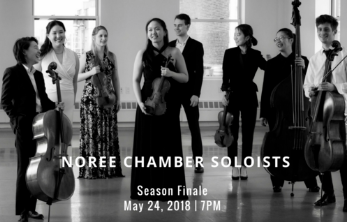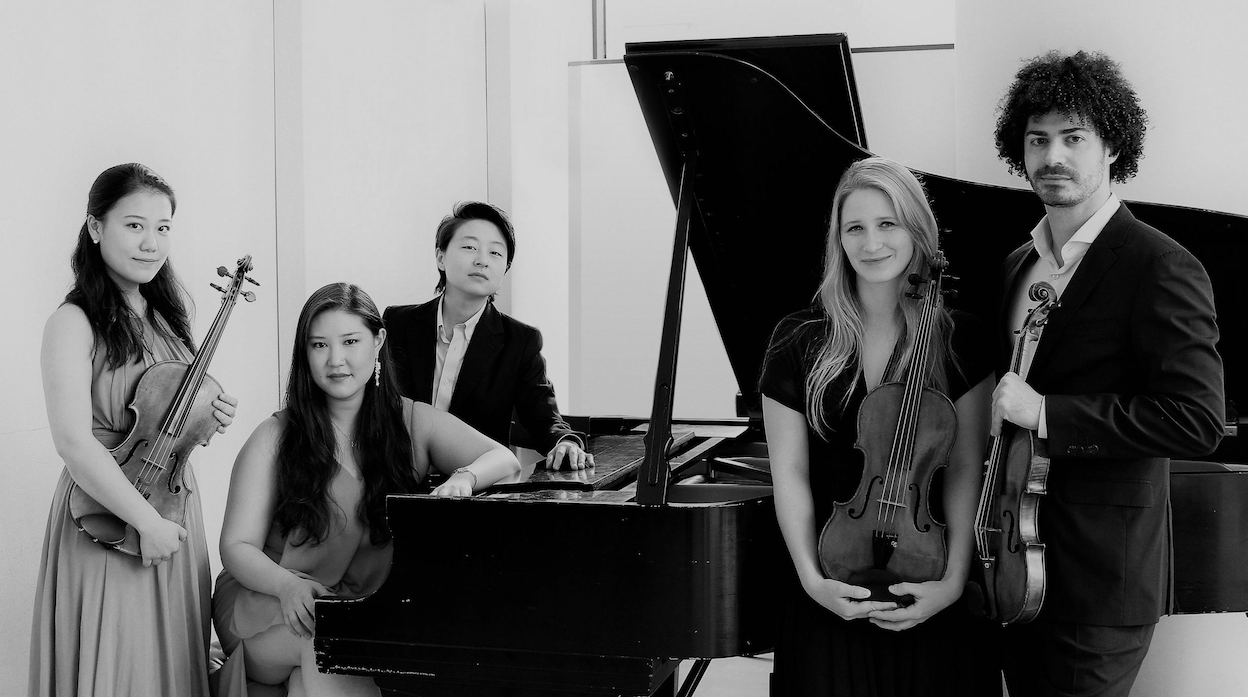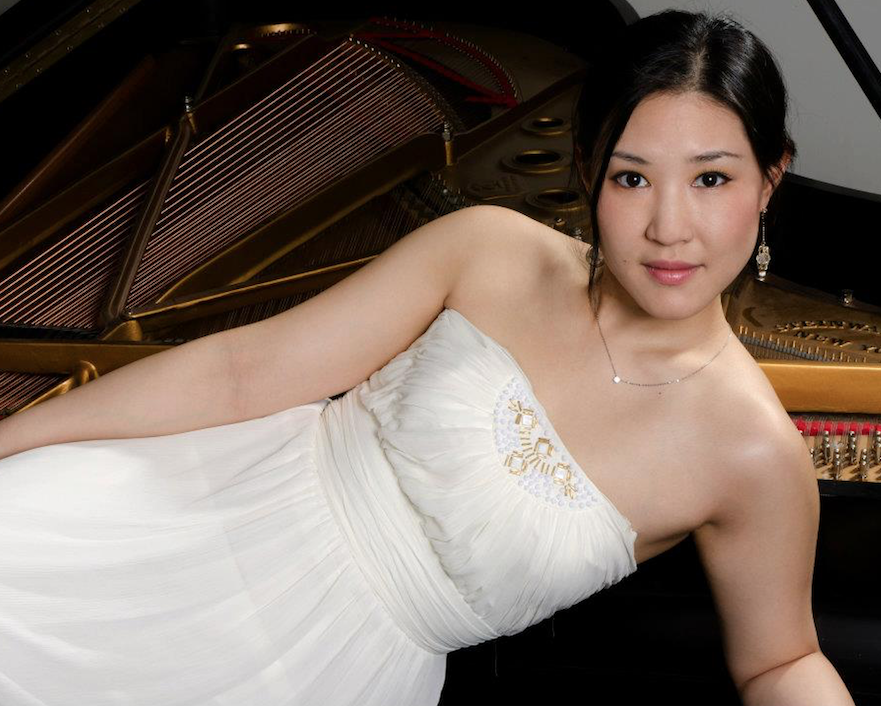Yoon Lee, Yi Qun Xu, artistic directors
Stella Chen, Francesca dePasquale, Bela Horvath, violins; Caeli Smith, viola; Yi Qun Xu, cello; Yoon Lee, piano
Guest Artists: Catherine Cho, violin; Roger Tapping, viola; James Kim, cello
Church of the Blessed Sacrament, New York, NY
May 24, 2018
The Noree Chamber Soloists (www.noree.org), with special guest artists Catherine Cho, Roger Tapping, and James Kim lending their talents, concluded their NYC Concert Series season on May 24, 2018 with a program of Beethoven, Fauré, and Mendelssohn at the Church of the Blessed Sacrament. This program was originally scheduled for September of last year but had had to be re-scheduled. The unforeseen bonus of this delay was that the Church of the Blessed Sacrament meanwhile received a beautiful new Steinway grand piano (less than a month ago).
The well-written and informative program notes written by Jung-Min Mina Lee, Noree Chamber Soloists’ resident musicologist, made an immediately favorable impression on this reviewer. It should also be mentioned that in a previous review in this journal (The Viola Sings- Noree Chamber Soloists), the lack of printed notes had been noted, so the willingness to address this issue, which some might consider a reviewer’s fussiness, was also appreciated. Biographies of all the artists were included as well.
I will admit to having some trepidation about the acoustics of this venue, but the wise placement of the players in the middle of the hall, with the audience seated close to them, proved to be effective in keeping the sound “local”.
Pianist Yoon Lee and violinist Catherine Cho opened the concert with Beethoven’s Violin Sonata No. 3 in E-flat major, Op.12, No. 3. This early work reflects Beethoven’s most optimistic self. It is brimming with ebullience in the outer movements and lyrical beauty in the central slow movement. Even though this is a violin sonata, with a more or less equal partnership between the players, Beethoven gives the pianist the lion’s share of the difficulties – this is not at all to suggest that the violinist has a “walk in the park” (nothing could be further from the truth) – just to say that the pianist for this work deserves special recognition. Ms. Lee was equal to Beethoven’s virtuosic demands while never overpowering Ms. Cho, even though the piano was on the full stick. Ms. Cho projected a rich, vibrant tone, while tackling the technical challenges with an assured ease. It was a pleasure to witness Ms. Cho’s and Ms. Lee’s rapport. The audience was thrilled by their performance, with many shouts of Bravo! It is always heartening to this listener to witness such an enthusiastic response to a fine performance.
Fauré’s Piano Quartet No. 2 in G minor, Op. 45 followed the Beethoven. Violinist Francesca dePasquale, violist Roger Tapping, and cellist Yi Qun Xu, joined Ms. Lee. While I was impressed with the passionate playing of the opening movement, the frenetic energy of the perpetuum mobile second movement, and the “all-in” approach to the driving relentlessness of the finale, it was the third movement Adagio that set this performance apart. Of this movement, Fauré himself said he was inspired by the memory of evening bells from his childhood in the village of Cadirac. The audience listened with rapt attention as the ensemble played this “eerie reverie” (Fauré ‘s words) with exquisite sensitivity.
After Intermission, violinists Catherine Cho, Stella Chen, Francesca dePasquale, Bela Horvath, violists Caeli Smith and Roger Tapping, and cellists James Kim and Yi Qun Xu joined forces for Mendelssohn’s Octet in E-flat major, Op. 20. Written when Mendelssohn was sixteen as a birthday gift for his violin teacher Eduard Ritz (pity the other gift givers who had to follow that!), the Octet is, as stated in the program notes, “a dazzling display of individuality and imagination not commonly matched with a sixteen-year-old.” One could easily add “or one of any age!” It is no mean feat even for ensembles who have played together extensively to successfully navigate not only the technical challenges, but the ensemble ones as well, so I was adopting a “wait-and-see” outlook. Happily, these players meshed together wonderfully. Balance and intonation were excellent, and passagework was crisp and clearly articulated. The third movement, the well-loved Scherzo, which takes inspiration from Goethe’s Faust, had a light, puckish playfulness that sparkled with elfin magic. It was the highlight of not only the Octet, but the entire performance for this listener. After the thrills of the Presto finale, the audience rewarded the players with a richly deserved standing ovation. A wine reception awaited the audience after the concert.
Noree Chamber Soloists is a group with great promise. These young players already possess technical mastery and, given more time playing together, they should mature into a first-rate ensemble.



